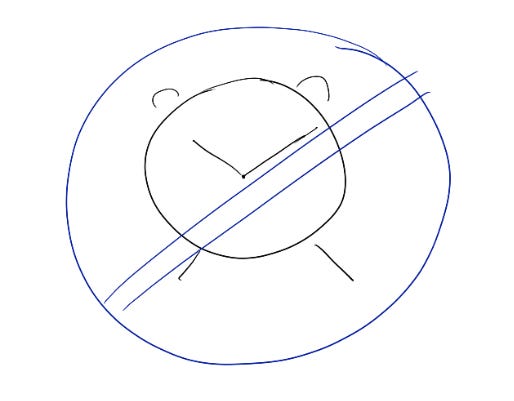My last couple posts have been about how simplicity in strategy and design is a competitive edge. But how do you decide what to simplify?
The best way I know? Spending time with the customer. This sounds easy, but it’s so hard!
If you’re like me, the hardest part is to be patient. Some part of my brain is always asking, “what’s the ROI on this 30-minute slot?” And I have to tell you — spending time with customers often does not feel high ROI in the short term. In fact, the most useful customer sessions feel like a punch in the gut. How many times have you watched someone use your product and thought — “But there’s a button right there! I built it just for you!!!” I get it! That feeling of frustration and the unpredictability of any specific customer session means it’s tempting to sacrifice customer time for more urgent tasks.
But I try to resist that. Even though being hands-on with customers can feel low ROI in the short term, it’s the highest ROI in the long term, because it gives me an intuition for how to build today and what to build next. Every time I feel confident that I’ve understood something important about my customers, I click into higher gear with my ideas and team.
My trick for speeding that up: Every couple weeks, I hold a recurring time slot in my calendar for “something customer-related”. This is a good Friday afternoon task, when (let’s be real) it’s hard to get big things done. Staring at that empty slot on my cal forces me to fill it.
My go-to exercises:
Use my product (surprising how educational this is!) and take notes + file bugs
Check out product reviews on Youtube, X, Facebook, Reddit, etc
Join UX research
Read support tickets
Watch hotjar recordings
Visit a customer
Visiting customers in person is my favorite. When I was at Faire (a marketplace for independent retailers), I could literally walk into stores in my neighborhood and ask where they get their products and how they felt about Faire — it was retail therapy disguised as customer research 🙂
One memorable customer was a nursing director at a hospital who also ran a gift shop in the labor & delivery ward. She said, “Faire changed my life. Now I can help new families can get what they need while they’re still in the hospital, so they have an easier time in their first few weeks.” As a mom of 3 difficult babies, I know exactly how meaningful that is. Whatever I built, I thought to myself, is this simple enough for Nancy to understand when she’s got 5 minutes between delivering babies?
That’s what I always look for — the kind of emotion that comes with someone saying “this product changed my life”, or even “this flow makes me so mad!” That deep emotion tells me what truly matters to our customers. It gives me a map for what to build, what to protect, and what’s getting in the way, and there’s no better way to find that insight than by spending time with the customer.



Ami I love the focus on understanding the customer. You're right, the initial ROI might feel low, but it's such a smart lon-term investment.
My first job selling directly to customers in retail came a couple of years out of grad school. I was working as a vendor in Lowes. My manager taught me that the key to selling to customers was to LISTEN to them. Learn about what they are dealing with, and what issues they have. Then once you know who they are and what they need, then you can sell them the right product for them, even if it's a competitor. That was another lesson is taught me; Feel free to recommend a competitor's product if we don't sell one that addresses their need. The top goal was to solve the customer's problem. Just discovered and subbed, Ami.
Great post Ami! It's interesting that all of the customer-related activities on your list involve interacting with real humans, at the fairly atomic level.
e.g.
- Not summaries of the top issues coming from support, but reading support tickets.
- Not reading research reports about website usability, but watching individual Hotjar sessions
- Not interacting with a synthetic Faire user, but speaking to Nancy
I've been thinking a lot lately about if it's possible to generate a similar level of empathy with AI... my current stance is "no", but I'm keen for any debate!